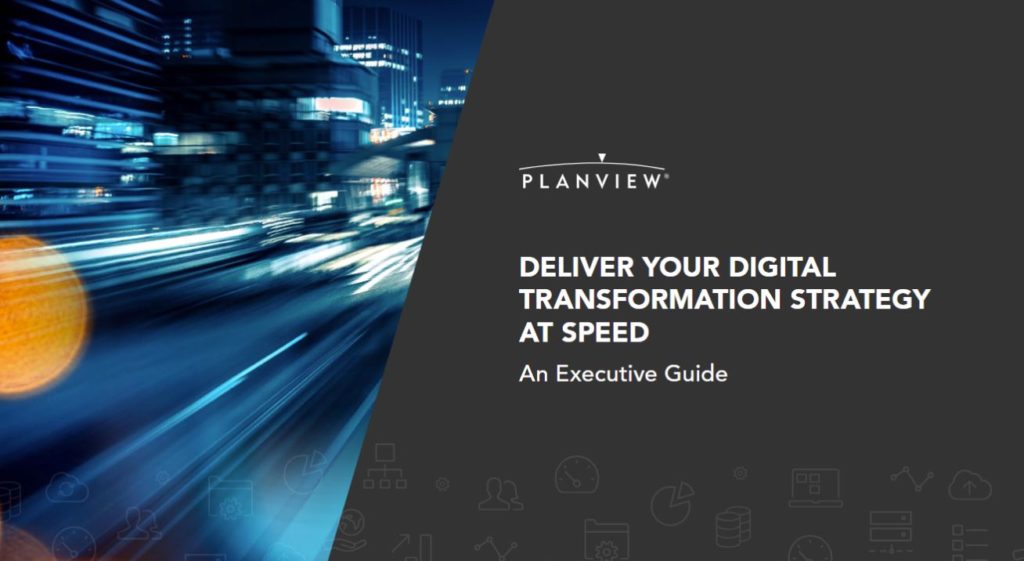
Digital transformation initiatives fail for a number of reasons. Sometimes it’s due to a misunderstanding of what digital transformation actually is; other times, it’s because of an unwillingness to adapt to an ever-changing professional environment. According to Ventana Research, successful digital transformation requires the highest level of work and resource management to return the greatest value. Whatever the reasons for failure, digital transformation is often one of the most challenging initiatives organizations undertake.
Considering the importance of digital transformation and how it’s essential to an organization’s long-term survival, why is it so difficult to facilitate?
Research conducted by PMI found that “underperforming” organizations (organizations which completed no more than 60% of projects on time and within budget) were largely dissatisfied with their digital transformation results. Only 36% reported their digital transformation had a major impact on performance.
However, when top-performing organizations with project success rates of 80% or higher were asked the same question, 52% admitted their digital transformation initiatives had a major impact on company performance.
In other words, these findings validate Ventana Research’s assertion that better work and resource management practices help organizations get more from their digital transformation strategy.
Let’s take a closer look into how digital transformation can be enhanced with work and resource management, according to Ventana Research.
Why Digital Transformation Needs Work and Resource Management
While technology plays an integral role in digital transformation, its primary initiative is to transform the way an organization operates, placing higher priority on efficiency, communication, and customer-centric practices. This is where good work and resource management comes in.
Like digital transformation, the goal of work and resource management is to help organizations adapt to an ever-changing business landscape. This is achieved by optimizing the way managers and team leaders prioritize tasks and projects, manage resources, and implement technology.
When preparing a failproof digital transformation strategy, Ventana Research stresses that good work and resource management practices are an integral part of digital transformation. These practices make it possible for organizations to prioritize digital transformation initiatives effectively, so that the most important stages of digital transformation are implemented first—allowing for a smooth organization-wide transition. This results in a well-planned digital transformation strategy that yields optimal returns on investment by improving workplace efficiency, resource management, and customer-oriented initiatives.
So, what makes that strategy effective? That varies depending on the needs and expectations of the organization, but there are a few key components that every initiative needs to succeed:
- Collaboration: Every member of your organization, across departments and hierarchical structures, should be working together to ensure the organization achieves a shared vision.
- Responsibility: Employees should have a voice when it comes to planning and implementing projects and should be included in the decision-making process.
- Flexibility: Digital transformation isn’t a linear project with a start and end date. Business and technology are constantly changing, and to keep up with those changes, you need a dynamic strategy that promotes growth and development within your organization.
In other words, the success of your digital transformation initiatives depends largely on how your teams and resources are managed. And, considering global organizations waste approximately $3 million every minute due to poor project management and performance, totaling a whopping $2 trillion every year, work and resource management should always be a priority when pushing digital transformation—or any major initiatives.
Let’s dive into four actionable solutions organizations can take to enhance digital transformation using work and resource management.
1. Measure the Ongoing Performance of Your Digital Transformation
Having access to accurate data and real-time analytics is a must when planning and implementing a digital transformation strategy. Being able to measure the impact your digital transformation initiative has had on your organization, and whether it has helped you reach the intended business outcomes is critical for optimizing and maintaining a long-term transformation strategy.
Implementing effective work and resource management solutions can help organizations manage and utilize work and resources effectively—which Ventana Research notes is essential for organizations wanting to achieve their initiatives through digital transformation:
- Providing an easy-to-use platform for managing tasks, activities, workers, and assets to facilitate digital transformation.
- Helping project managers make more informed decisions when it comes to allocating work and resources.
- Allowing managers to map out action plans and prioritize tasks essential to delivering digital transformation.
2. Keep Everyone in the Loop
One of your key goals when implementing a digital transformation strategy is to create complete workplace transparency, across all levels and hierarchies. People in the workforce are the ones with the experience and technical knowledge; therefore, their opinions are valuable when planning and adjusting your digital transformation initiatives. On the other hand, you also want to ensure that the executive teams are included in the initiative once its initial planning phase has ended.
By keeping everyone involved throughout the duration of your transformational journey, you increase your organization’s effectiveness at digital transformation. People get an open line of communication for feedback and reporting issues, while leadership stays up to date on performance, helping everyone involved make informed business decisions during meetings.
The result is an entire organization capable of working together cohesively to reach a common set of objectives.
3. Use Technology to Optimize Collaboration and Productivity
In today’s fast-paced business environment, digital work and resource management solutions are all but necessary for guaranteeing optimal collaboration—especially for large organizations that manage multiple projects on top of their ongoing digital transformation.
More specifically, work and resource management improves your transformation initiatives by:
- Creating a clear channel of communication where stakeholders, managers, and employees can discuss project-related information in real time without being confined to internal silos.
- Providing a visual representation of the program/project workflow from start to finish.
- Making it easier for managers to identify and correct any problems that may arise.
- Allowing for smoother cross-organization collaboration between your organization and IT companies, ensuring everyone’s transformation goals and desired outcomes remain aligned throughout the duration of the project.
Organizations succeed in the digital era by being adaptable, quick to implement new strategies when needed, and able to collaborate across internal and remote teams. When highlighting common digital transformation mistakes organizations make, Ventana Research placed tech resistance at the top of their list. On the other hand, organizations that embrace software solutions which enhance collaboration and communication are more likely to adopt a unified approach towards facilitating digital transformation, making it easier for them to meet their business goals and objectives.
4. Adopt an Agile Approach
Agile drives digital transformation.
According to Ventana Research, organizations that are agile and dynamic are better suited to facilitate digital transformation effectively. This is because the Agile approach tears down bureaucracy, optimizing collaboration by:
- Moving away from the traditional hierarchical structures in business and adopting a team-oriented mentality.
- Removing the focus solely on traditional metrics directly tied to profitability, and start looking at how your organization is coping with changing preferences among customers (“Customer delight”).
- Embracing a wider range of methodologies for strategic execution.
- Being able to quickly shift strategies, change goals, and adopt new technology so that your transformation strategy stays aligned with the expectations of the market.
The Agile approach moves teams from being milestone-driven to providing continuous delivery. As a result, managers, stakeholders, and employees are all better equipped to meet the growing needs of digital transformation in a dynamic and competitive landscape. Agile is so effective at driving transformation that nearly 85% of executives surveyed believe digital transformation requires organizational agility.
Bringing It All Together
How you manage your work and resources plays an important role in determining the success of your digital transformation initiatives. Complete transparency is key.
Once you’re able to manage work and resources efficiently, you can assess the strengths and weaknesses of your strategy more accurately—your immediate priorities, issues preventing goal completion, and how you can improve cross-organizational collaboration. By doing so, you can gain deeper insight into how digital transformation can be used to enhance your organization’s overall performance.



![Collectively Deliver on Strategy with Digital Transformation [Video]](https://blog.planview.com/wp-content/uploads/2018/07/Collectively-Deliver-on-Strategy-with-Digital-Transformation-2.jpg)


